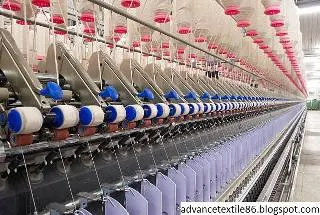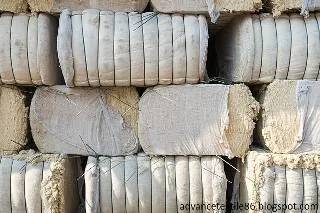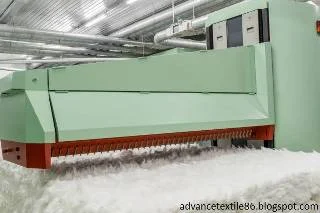Introduction
Yarn
is the longest length of interconnected fibers suitable for use in textile,
sewing, crocheting, sewing, knitting, embroidery, or rope making. Spun yarn is
mainly made by bending the fibers together and making yarn or single. The
spinning of the fibers twisted into yarns in the process is called spinning.
Spun yarns may contain a single type of fiber or a mixture of different types.
The yarn consists of a combination of curved strands of fiber, known as pluses
when grouped together. Filament yarns contain filament fibers that are either
twisted together or simply grouped together. Textured yarns are made by the
process of air texturing filament yarns, which connect multiple filament yarns
to the yarn with some characteristics of the cut yarn. The slab effect means
that the thick and thin parts are yarn that changes regularly or irregularly.
What Is Spinning?
Spinning
is the twisting process where the fiber is drawn out, twisted, and wound onto a
bobbin. The yarn issuing from the drafting rollers passes through a thread guide,
round a traveler that is free to rotate around a ring, and then onto a tube or
bobbin, which is carried on a spindle, the axis of which passes through the
center of the ring. The spindle is driven and the traveler is dragged around a
ring by the loop of yarn passing around it.
Yarn manufacturing process step by step
Yarn
manufacturing is a sequence of processes that convert raw cotton fibers into
yarn suitable for use in various end products. Some processes are required to
obtain the clean, strong, uniform yarns required in modern textile markets.
Beginning with a dense package of tangled fibers containing varying amounts of
non-lint materials and unusable fiber, continuous operations of opening,
blending, mixing, cleaning, carding, drawing, roving, and spinning are
performed to transform the cotton fibers into yarn. While the basic yarn
manufacturing process has remained unchanged for many years, processing speeds,
control technology, and package sizes have increased. Its properties and
processing efficiency are related to the properties of processed cotton fibers.
The end-use properties of the yarn are also a function of processing
conditions.
Cotton cultivation and yield
Cotton
grows anywhere with long, hot dry summers with plenty of sunshine and low
humidity. Indian cotton, Gossypium arboreum is fine but mainly suitable for
hand processing. American cotton produces the longest main product required for
the production of Gossypium hirsutum machines. Planting takes place between
September and November and the crop is harvested between March and June. The
cotton balls are harvested by a stripper harvester and collected by a spindle
picker who removes the whole ball from the plant. Cotton bolls are the seed
pods of the cotton plant which are fibrous with a few thousand seeds about 2.5
and a half centimeters long.
Ginning
Seed
cotton goes to a cotton gin where the ginning process is done. The cotton gin
separates the seeds and removes debris from the fibers. In the saw gin, the
circular saws grab the fiber and pull it through a jolt that is too narrow for
the seeds to pass through. A roller gin has long been used with the main
cotton. Here, a leather roller captures the cotton. A knife blade, set near the
roller, drawing through the teeth in the seed circular saw and rotating brush
that separates it from their cleaning. Ginned cotton fiber, also known as lint,
is then compressed into strands that are about 1.5 m long and weigh about 220
kg.
Bell opening and cleaning
The
cotton is driven into the mills in large 500-pound bells. When the cotton comes
out of a mound, it is all packed together and still contains vegetable matter.
The bell is opened using a machine with a large spike, called an opener. The
cotton is sent through a picker or similar machine to pick up and remove the
vegetable matter. In any picker, the cotton is beaten with a beater bar to make
it lose. It is then fed through various rollers, which help to remove the
vegetable matter. The cotton, with the help of fans, is then collected on a
screen and fed through more rollers until it emerges as a constant soft bouncy
sheet, known as a lap.
Blending and Mixing
In
the spinning process, when various fibers of different or the same grades are kept
together then it is called blending. For example, yarn is produced by using 65%
cotton yarn and 35% polyester yarn then it’s called blending. The mixture is
based on the movement of important fiber properties such as length, fineness,
strength, etc., and quantitatively proportioning and combining the properties
under controlled conditions. In the blending process must be a particular ratio
of fibers mix with each other.
Porcupine opener
The
cotton fed by the previous opener is advanced with the help of a feed lattice.
The cotton sheet now moves between the paddle and the paddle roller. The weight
of cotton fed per unit time is fixed by the speed of this paddle feed control.
The pedal roller feeds the sheet of cotton into a pair of feed rollers that are
heavy to give the required grip on the cotton. 16 round discs are mounted on
the shaft of this opener. 14 to 18 striker blades are alternately riveted on
each round disc. Each striker is bent at a slightly different angle. The narrow
sheet of cotton delivered from the feed roller is severely beaten by the
fast-rolling striker of the porcupine beater opposite the grid bar. Due to this
beating action, the cotton is effectively opened and the lifted waste particles
pass through the gaps in the grid bar. At the end of the grid bar, a stripping
rail is provided, this is a metal bar that is set about 1/16 inch away from the
end of the striker. This small clearance between the stripping rail and the
striker prevents a bunch of cotton from being carried near the beater.
Step cleaner
In
the condenser step, the cleaner is employed to feed the cotton. The photo-cell
configuration of the reserve tower unit monitors the height of the reserve
fiber and signals stop or start commands on the processing machine. Cotton is
fed from the reserve tower with a pair of feed rollers. According to the height
of the cotton level, the feed cell of the reserve tower of the next machine,
the motorized gear reduction unit, uninterruptedly feeds the feed. The grid
bars combine effectively with the centrifugal force and the rapid revolution of
beating the cotton striking cylinder and the spike on the cotton against
gravity to open the cotton and remove the heavy impurities. From cotton heavy
impurities, dust and dirt particles, short fibers, etc. pass through the bar
interval and are collected outside the grid bar.
Scotching process
Scotching
refers to the process of cleaning cotton from seeds and other impurities. The
first scotching machine was invented in 1797 but did not become mainstream
until 1808 or 1809 when it was introduced and used in Manchester, England. By
1816, it was generally accepted. The scotching machine worked by twisting the
cotton through a pair of rollers and then hitting the iron or steel bars known
as bitters. The beetles, which turn very quickly, hit the cotton hard, and
scatter the seeds. This process is carried out by holding a series of parallel
bars that allow the seeds to pass through. At the same time, the air is blown
across the bars, which takes the cotton to a cotton chamber.
Carding process
In the carding process, the fibers are separated and then tied together in a loose
strand. The cotton comes out of the picking machine in the lap and is then
taken to the carding machine. The fibers are neatly arranged to make the
carders easier to spy. The carding machine basically carries a large roller
with smaller ones around it. All the rollers are in small teeth and the cotton
in the teeth becomes finer as it progresses further. The cotton leaves the
carding machine in the form of a sliver: a large rope of fibers.
Combing process
Combing is a method of preparing carded fibers for spinning. It is divided into linear and circular combing. For circular combing, a noble comb is an excellent example. Example of French comb linear glass. The combing process grills out the evening with the process of making the carded or scratched top suitable for spinning. The combing separates the short fibers through a rewritten row of rotating rings or steel pins. The strands at the top of it are straightened and located parallel to each other. The short fibers that are thrown away when combing wool are called nails and become fun to ground.
Draw Frame
The production cost of the draw frame is less than 3% of the total yarn cost.
However, it has a great effect on the quality of yarn, especially in the
evening. The draw frame is a guaranteed compensation point for removing errors.
High-performance drawing frames currently produce 400 kg of sliver per hour in
each distribution. The main goal of the drawing frame is equalization. One of
the main tasks of the draw frame is to increase parity in the short, medium,
and - especially - in the long run. In order to get the best value of strength
in parallel yarn properties, the fibers must be arranged parallel to the fiber
strand. Creating this parallel layout is basically the work of the draw frame.
It accomplishes this task through the draft as each draft step leads to
straightening the fibers.
Ring frame
The
ring frame was submitted to John Thorp of Rhode Island in 1828/9 and was
developed by Mr. Jencks of Pawtucket, Rhode Island, who named Richard Marsden
as the inventor. A ring frame was made by pressing cast iron and later steel.
There are spindles on each side of the frame, on top of which rollers are
drafting, and on top, there is a krill loading the roving bobbins. Roving goes
down from the bobbins to the drawing rollers. Here the rear roller fixed the
incoming thread, while the front rollers rotated faster, pulling the roving and
making the fibers more parallel. The rollers are individually adjustable,
mainly by lever and weight. Short roving now goes through a thread guide that
is adjusted to the center above the spindle. The thread guides are on top of a
thread rail that allows any broken threads to be wrapped around them for
duffing or piking. The low-rowing spindle moves to the assembly, where it is
threaded through a small D-ring known as the Traveler. Move along the traveling
ring. This is the name given to the ring frame. From here the thread is
connected to the existing thread in the spindle.
Doffing
Doffing
is a separate process. A servant is descending the rails of the ring below. The
device shuts down. The thread guides are hinged. Complete bobbin coils are
removed from the spindles. The new bobbin tube holds the thread over the
spindle and holds the cup to the neck of the spindle, lowering the thread
guides and restarting the machine. Now all the process is done automatically.
The yarn is taken in a cone winder. The machines are currently manufactured by
Reiter (Switzerland), Toyota (Japan), Zinser, Suessen, (Germany), and Marzoli
(Italy). Reiter's Compact K45 system has 1632 spindles, while Toyota has a
machine with 1824 spindles. All control, and atmospheric conditions are required.













0 Comments